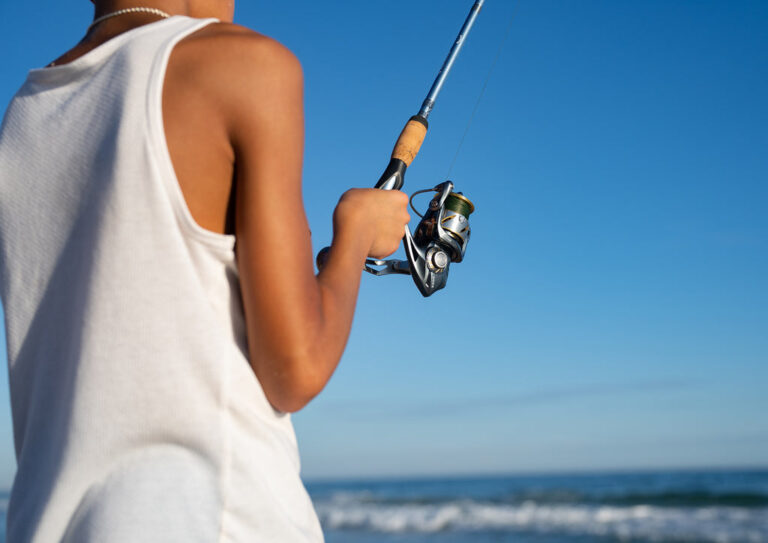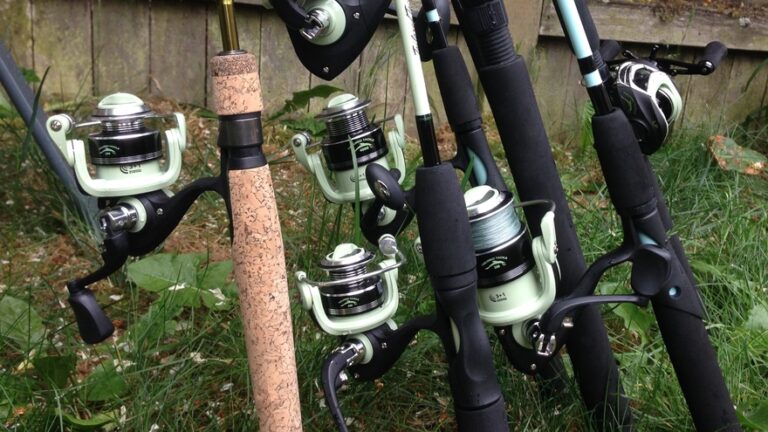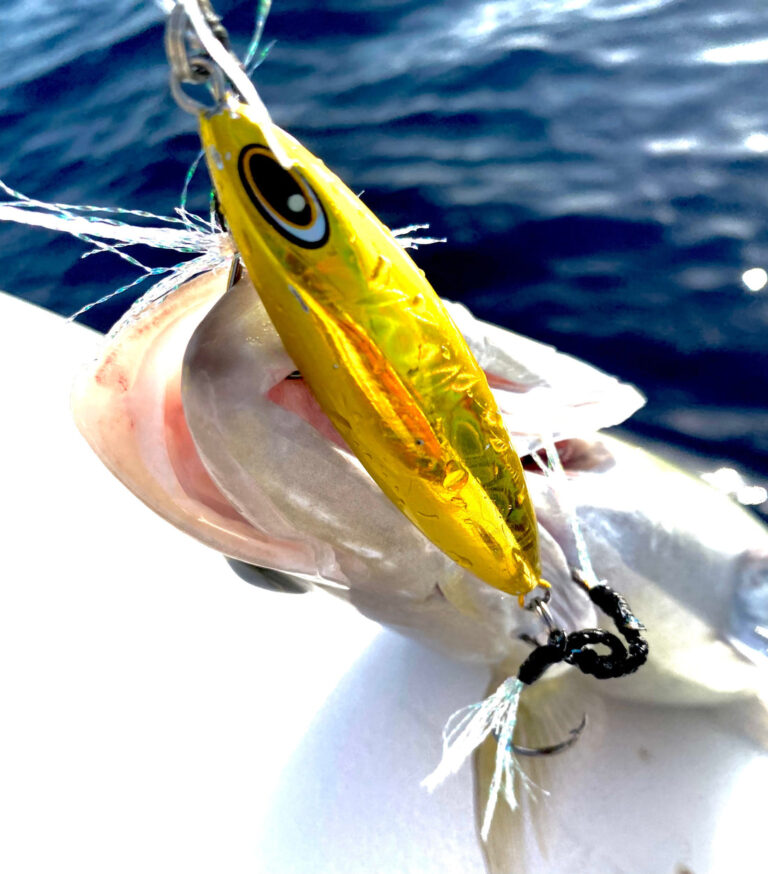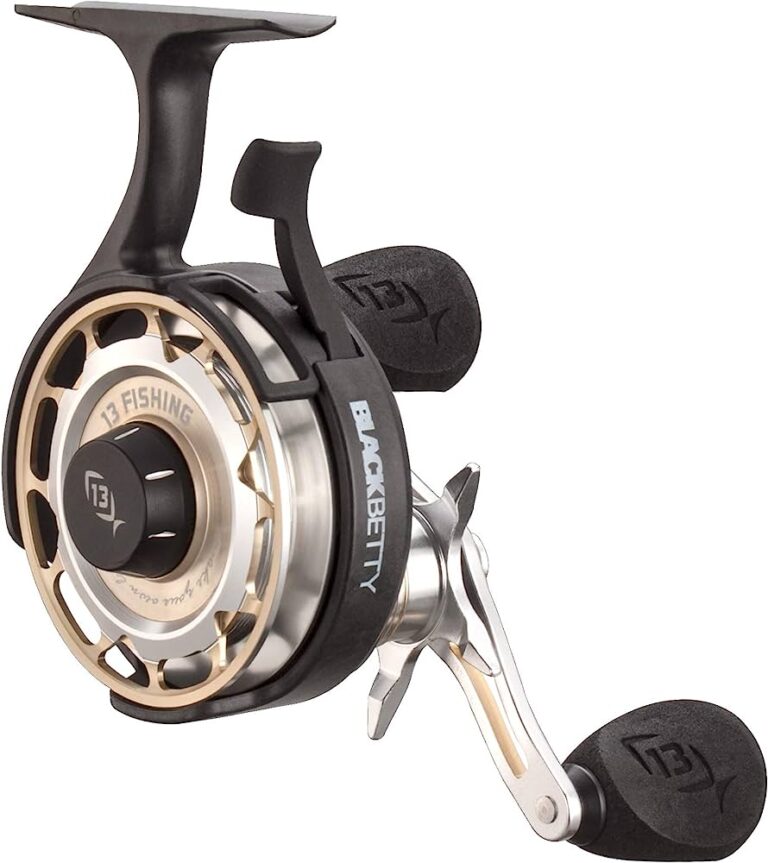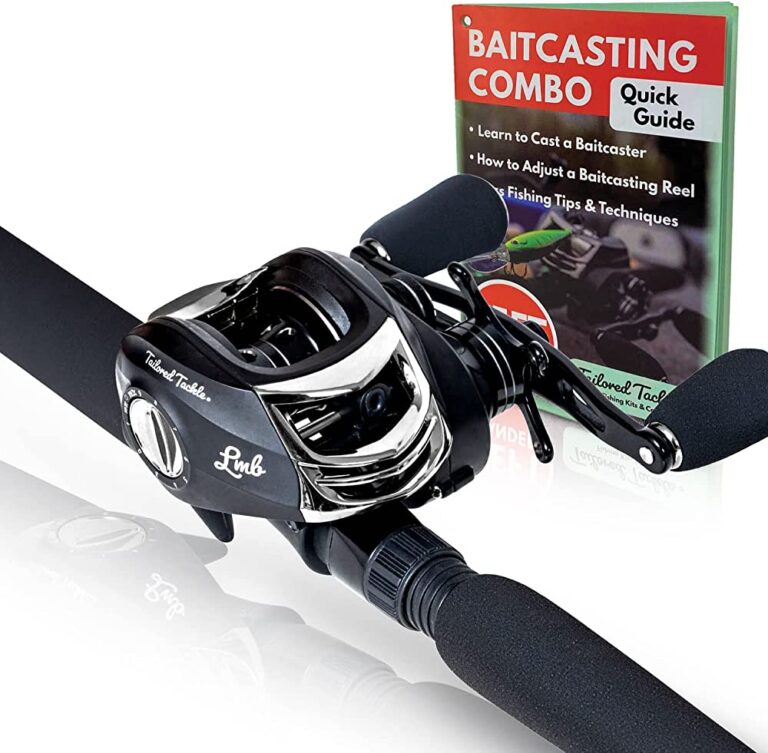Choosing the right spinning rod depends on your fishing needs. A versatile spinning rod can be used for a variety of fishing applications, making it a good all-around choice.
Fishing enthusiasts know the importance of selecting the right spinning rod for their angling needs. A good spinning rod should offer the right strength and sensitivity to handle the fish species you’re targeting while also being comfortable and easy to use.
When choosing a spinning rod, factors such as rod power, action, length, and material should be considered. Additionally, identifying the type of water and fish you will be fishing in can also influence your decision. Putting careful thought and research into selecting a spinning rod will help you make the right choice for a successful and enjoyable fishing experience.

Credit: latestintech.com
Understanding Spinning Rods: A Brief Introduction
Spinning rods are one of the most popular tools among anglers. Choosing the right spinning rod can make all the difference when it comes to fishing. Understanding the spinning rod is crucial for choosing the right rod that fits your fishing needs.
In this post, we will provide you with all the information you need about spinning rods, including how they differ from casting rods, which type of fishing requires a spinning rod, and what exactly a spinning rod is.
What Is A Spinning Rod?
A spinning rod is a type of fishing rod that has its reels mounted facing downward. The guides on a spinning rod are designed to face downwards as well, which means that the line comes off the spool and goes through the guides in a straight line.
Spinning rods are suitable for a variety of fishing scenarios, from freshwater lakes and streams to targeting offshore species in the ocean.
Some important features of spinning rods include:
- Spinning rods come in different lengths, power, and action, which means they can be tailored to fit specific fishing techniques and species.
- Spinning rods are versatile and can handle a variety of baits and lures.
- Spinning rods are ideal for lightweight fishing, which makes them a popular choice for beginners and children.
How It Differs From A Casting Rod?
Casting and spinning rods differ mainly in their designs and techniques used to cast. For casting rods, the reel is mounted on the top while the guides sit on the bottom. In contrast, spinning rods have guides placed downwards while the reel is affixed below.
This difference affects the technique used to cast with each rod type.
Additionally, spinning rods are more flexible and lighter than casting rods, which means they are great for fishing with lighter lines and lures. On the other hand, casting rods are stiffer and heavier, which makes them a better choice for heavier lines and lures.
Which Type Of Fishing Requires A Spinning Rod?
Spinning rods are excellent for a wide range of fishing scenarios, including:
- Freshwater fishing: Spinning rods are perfect for fishing in freshwater lakes or streams. Their lightweight design makes them easy to cast, making them a great choice for fishing for panfish and trout.
- Saltwater fishing: Spinning rods are also ideal for saltwater fishing, including pier fishing, boat fishing, and surf fishing. They are great for targeting species like bonefish, striped bass, and redfish.
- Lure fishing: Spinning rods can handle a range of lure sizes, which makes them a popular choice for lure fishing. They are perfect for fishing with lighter lures, including spinners, small jigs and poppers.
Spinning rods are a great choice for anglers of all levels and can be used in a range of fishing scenarios. Understanding what a spinning rod is and how it differs from a casting rod, as well as which type of fishing requires a spinning rod, will help you make an informed decision about the right spinning rod for you.
Tip 1: Consider Your Fishing Style
Choosing the right spinning rod: tip 1: consider your fishing style
Fishing enthusiasts know that selecting the right spinning rod depends on several factors, including your fishing style. This article will provide some useful tips to help you choose the perfect spinning rod for your needs.
Freshwater Vs. Saltwater
Before purchasing a spinning rod, you must decide whether you will be fishing in freshwater or saltwater. Freshwater and saltwater rods are designed for different environments, take note:
- Freshwater rods: These rods are ideal for angling in rivers, lakes, and other bodies of freshwater. They are usually lighter and more sensitive, which makes them perfect for catching small to medium-sized fish species such as trout, bass, and panfish.
- Saltwater rods: Saltwater rods are designed to withstand the harsh elements of the ocean. They are built with stronger and more durable materials and thicker guides to handle larger fish. Furthermore, they are heavier, longer, and have a faster action, which makes them perfect for catching larger fish species such as tarpon, marlin, and tuna.
Angling Technique
Your angling technique is another crucial factor to consider when selecting a spinning rod. Various techniques require different types of rods, here are a few:
- Baitcasting rods: Baitcasting is a popular technique for catching largemouth bass, among other fish species. Baitcasting rods are ideal because they have a faster action and more power that enables the angler to cast heavier lures.
- Spinning rods: Spinning is another popular technique that involves casting a lure with an open-faced reel. If you use this technique, a spinning rod would be the perfect choice because of its ease of use and versatility.
Targeted Fish Species
Finally, the type of fish that you intend to catch is a critical factor to consider when selecting a spinning rod. Here are some examples:
- Ultralight rods: Ultralight spinning rods are designed for catching small fish species like trout or panfish. They are usually shorter, lighter, and more sensitive, which makes them perfect for casting small lures.
- Heavy rods: Heavy spinning rods, on the other hand, are made for catching larger fish species like salmon or pike. They are usually longer, heavier, and have more power.
Choosing the right spinning rod can help you make the most of your fishing experience. Whether you are angling for fun, sport, or competition, considering your fishing style, angling technique, and targeted fish species will ensure that you make an informed decision and select a spinning rod that is perfect for you.
Tip 2: Rod Material Matters
Choosing the right spinning rod: tip 2 – rod material matters
When it comes to choosing the right spinning rod, rod material is a crucial factor to consider. The two most popular materials used in spinning rods are graphite and fiberglass. Both materials have their own advantages and disadvantages, and the choice ultimately depends on the angler’s needs and preferences.
In this section, we will dive into the differences, advantages, disadvantages, and how rod material affects performance and sensitivity.
Graphite Vs. Fiberglass
Graphite and fiberglass are two popular and distinct materials used in spinning rods. Graphite is a lightweight and sensitive material that is perfect for finesse techniques, while fiberglass is heavier and more durable, making it suitable for heavier lures and techniques.
Advantages And Disadvantages Of Each Material
Graphite
Advantages:
- Lightweight and sensitive
- Perfect for finesse techniques
- Provides excellent hook set and responsiveness
Disadvantages:
- Less durable than fiberglass
- More expensive compared to fiberglass
Fiberglass
Advantages:
- Heavier and more durable than graphite
- Ideal for heavy lures and techniques
- More affordable compared to graphite
Disadvantages:
- Not as sensitive as graphite
- Not suitable for finesse techniques
How Material Affects Performance And Sensitivity
The material of the spinning rod affects not only its weight and durability, but also its performance and sensitivity. Graphite rods offer greater sensitivity and responsiveness, allowing the angler to detect even the slightest bites and nibbles. On the other hand, fiberglass rods are less sensitive but can handle big fish and heavier lures.
The material of a spinning rod plays a critical role in its overall performance and suitability to the angler’s needs. Whether you choose graphite or fiberglass depends on the techniques you plan to use, the fish species you target, and your personal preferences.
Tip 3: Guide Size And Configuration
Choosing the right spinning rod: tip 3 – guide size and configuration
The guide size and configuration of a spinning rod play an important role in determining how well it performs. Here are the key things to consider when making your choice:
Choose The Right Number Of Guides
The number of guides on a spinning rod determines how much support the fishing line has while being cast or retrieved. If the rod has too few guides, the line will have too much contact with the blank, causing it to wear and ultimately break.
- For a spinning rod that’s up to 6 feet long, you generally should have six guides, in addition to the tip guide.
- For a longer rod, add one or two more guides.
The Importance Of Guide Material
The guide material affects the spinning rod’s overall performance, durability, and price.
- Ceramic guides are the most popular choice for most spinning rods, as they are durable and corrosion-resistant.
- Stainless steel guides are a budget-friendly option that is resistant to rust and bending.
- Titanium guides are the most expensive but also the most durable. They are highly resistant to corrosion and can withstand being bent out of shape without breaking.
Types Of Guide Configurations And Which One To Choose
There are two main types of guide configurations for spinning rods – single-foot and double-foot guides.
- Single-foot guides are generally lighter, less expensive, and provide better sensitivity. You will often find them on rods designed for ultralight fishing.
- Double-foot guides are heavier and offer more support for a heavier line. They tend to be more expensive, but they are stronger and longer-lasting.
When choosing a guide configuration, consider the type of rod you’re using and the type of fishing you’ll be doing. For example:
- If you’re using a lightweight spinning rod for panfish, single-foot guides are a great option.
- If you’re fishing for heavier species such as bass or pike, a double-foot guide configuration will provide added strength and durability.
The guide size and configuration play a vital role in the way a spinning rod performs. By considering the number of guides, guide material, and guide configuration, you can choose a spinning rod that suits your fishing needs perfectly.
Tip 4: Rod Length And Power
How Length And Power Affect Casting Distance
Spinning rods come in various lengths, power ratings, and actions. Knowing the right combination of these parameters is crucial in your fishing game. The rod length and power significantly affect the casting distance and the overall performance of your rod.
- Longer rods provide longer casting distance
- Shorter rods have greater accuracy
- Power affects casting distance, and it limits the amount of weight, or line, the rod can handle
- Rods come in different power ratings: Light, medium light, medium, medium heavy, and heavy
Understanding Rod Power And Actions
Rod power identifies the strength of the rod, and it relates to the weight of fish the rod can handle. Actions define how a rod bends when pressure is applied. Knowing these parameters is essential in selecting the right spinning rod.
- Light rods are suitable for smaller fish species like trout and other panfish
- Medium-light rods can handle slightly bigger fish like crappie, bass, and walleye
- Medium rods work well with larger fish species
- Medium-heavy and heavy rods are suitable for bigger fish like salmon and pike
- The fast-action rod bends at the tip section, providing better sensitivity
- The slow-action rod bends all through the length, providing better flexibility
Choosing The Right Length For Your Needs
Knowing the right rod length will determine how well your fishing experience will be. To do so, consider the type of fish species you are targeting, your level of expertise, and the environment you are fishing in.
- A 6ft to 6ft 6in rod is great for small species, ideal for beginners.
- A 7ft to 7ft 6in rod works well for all-around fishing and is also good for beginners.
- An 8ft or longer rod is suitable for larger fish species; it’s ideal for advanced anglers.
Choosing the right spinning rod depends on your skill level, the type of fish you are targeting, and the fishing environment. Take time to do your research before selecting the perfect rod for you. Remember that the rod’s length, power, and action should be reliable to ensure an excellent fishing experience.
By adhering to the guidelines above, you’ll be well equipped to choose the right spinning rod for your needs.
Tip 5: Budgeting For Your Spinning Rod
Setting A Budget
When it comes to choosing the right spinning rod, one of the most important aspects to consider is your budget. Setting a budget can help narrow down your options and ensure that you are making a smart and manageable investment.
Here are a few key points to consider when creating your budget for a spinning rod:
- Determine how often you will be using the rod and how high-end of a rod you need based on your level of experience and skill level.
- Keep in mind that a higher price does not always equal higher quality. It is possible to find a great spinning rod that meets your needs without breaking the bank.
- Consider if you need to purchase additional gear, such as reels or line, as part of your overall budget for the spinning rod.
Compare Brands And Models
Once you have a budget in place, it’s time to start comparing brands and models to find the best spinning rod for your needs. Here are some key points to keep in mind when comparing options:
- Look for reviews from reputable sources to get a sense of how well different brands and models are reviewed by other anglers.
- Consider the specific features and benefits of each model, such as the length, power, and lure weight rating.
- Think about where you will be fishing and what type of fish you will be targeting, as different models may be better suited for different environments and species.
Tips For Saving Money Without Sacrificing Quality
If you have a limited budget for a spinning rod, there are still ways to find a high-quality rod without breaking the bank. Here are some tips:
- Look for sales or discounts on high-quality rods from reputable brands.
- Consider purchasing a used rod from a trustworthy seller, as this can often save you money without sacrificing quality.
- Try selecting a model with fewer features or a shorter length, which can often be more affordable but still meet your needs.
By keeping these key points in mind, you can ensure that you find the right spinning rod for your needs, without overspending or sacrificing quality.
Conclusion
After going through the different factors to keep in mind while choosing the right spinning rod, it’s evident that the process is complex and requires careful consideration. The type of fishing, rod power, action, material, length, and additional features all come into play when selecting a spinning rod.
It is important to do proper research before making a decision on which one to buy. Consider your skills, budget, and fishing type before making a final purchase. It’s worth noting that a good spinning rod will provide an enjoyable fishing experience and increase your chances of catching a fish.
We hope that this article has provided enough information to help you make a more informed decision for your fishing needs. Happy fishing!

